
Display Title
Math Clip Art: Parallel Lines Cut by a Transversal 2
Display Title
Math Clip Art: Parallel Lines Cut by a Transversal 2
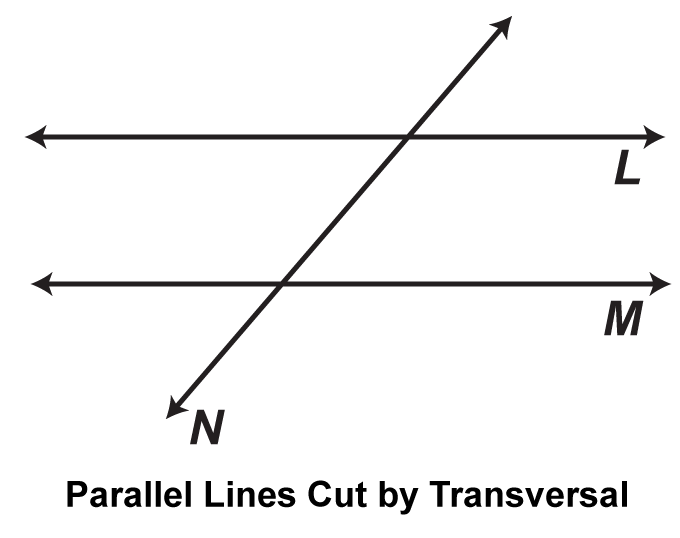
Topic
Geometry
Description
This math clip art image is the second in a series illustrating the properties of parallel lines cut by a transversal. It shows two parallel lines intersected by a third line, known as a transversal. This visual representation is crucial for introducing students to the concept of parallel lines cut by a transversal and the various angle relationships that result from this configuration.
Using math clip art like this in geometry lessons can greatly enhance students' understanding of complex spatial relationships. The clear, simple design of the image makes it easy for students to focus on the key elements: the parallel lines and the transversal. This visual aid can be seamlessly incorporated into lessons on geometry, serving as a foundation for exploring concepts such as corresponding angles, alternate interior angles, and alternate exterior angles.
Teacher's Script: "Now that we understand what parallel lines are, let's look at what happens when we draw another line that crosses both of them. This new line is called a transversal. Can you see how it creates different angles where it intersects the parallel lines? We're going to explore these angles and discover some fascinating relationships between them. This understanding will be crucial as we delve deeper into geometry and learn about proofs involving parallel lines."
For a complete collection of math clip art related to Geometry click on this link: Parallel Lines Cut by a Transversal Collection.
Parallel Lines Cut by a Transversal
Parallel lines are on the same plane and do not intersect. Here are two lines, L and M, that are on plane P and parallel.
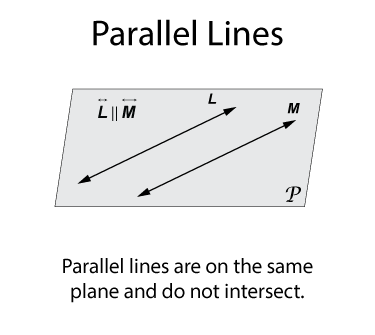
Parallel lines are are always the same distance from each other. In this illustration the dashed segment indicates the distance between the two lines. That distance doesn't change.
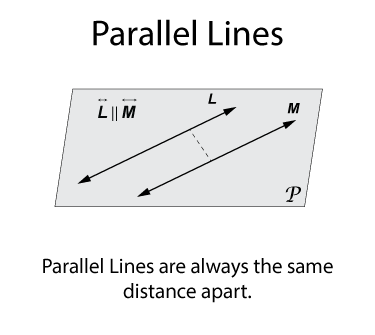
A line that intersects the parallel lines is called a transversal. In the illustration below you can see transveral N that insersects lines L and M.
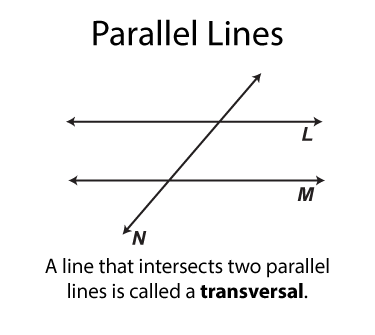
When parallel lines are cut by a transversal, there are number of set of angles whose properties are important to remember. The categories of angles include:
- Alternate interior angles
- Alternate exterior angles
- Same side interior angles
- Same side exterior angles
- Supplementary angles
- Vertical angles
Let's start with the alternate interior angles, which are shown here. There are two sets of alternate interior angles. These pairs of angles are congruent. The word "alternate" means "opposite" In each case the one angle is on the opposite side of the transversal from the other angle.
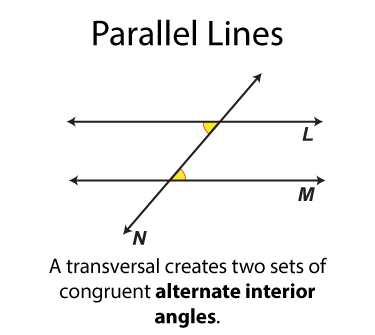
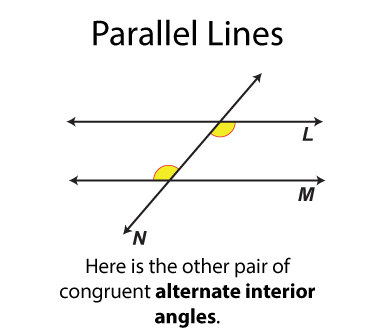
The next set of angles are called alternate exterior angles. There are two sets. Each set of angles is congruent. Each angle is on one side of the transversal from the other angle it is congruent to.
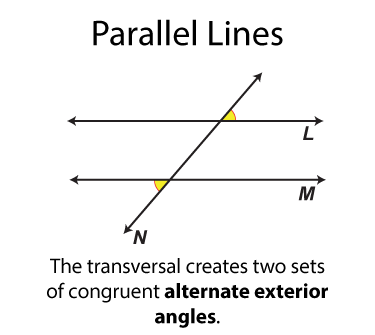
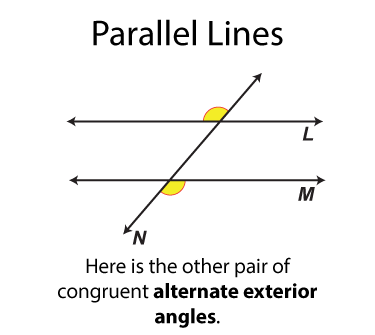
The next set of angles are called corresponding angles. There are four sets. Each set of angles is congruent. Each set of angles is on the same side of the transversal.
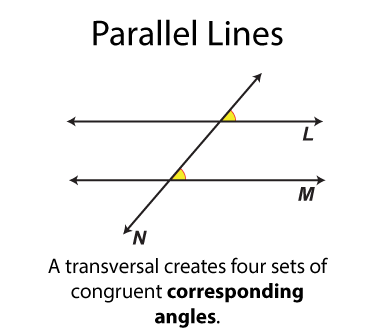
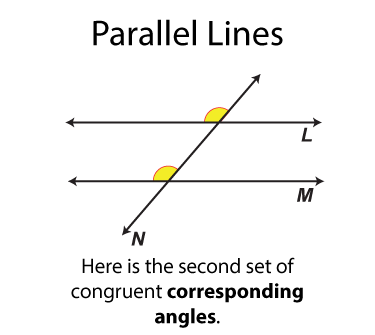
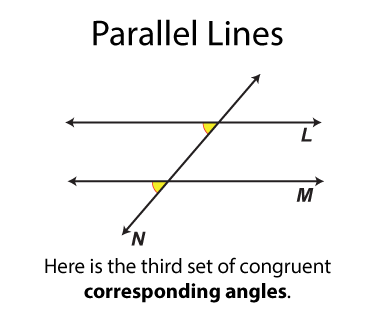
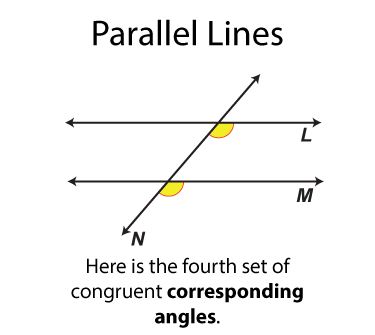
The next set of angles are called vertical angles. There are two sets. Each set of angles is congruent. (By definition all vertical angles are congruent.) Each angle is on on the opposite side of the transversal from the other angle it is congruent to.
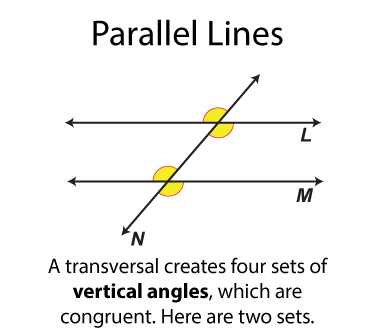
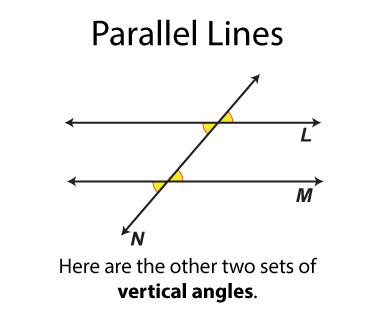
The next set of angles are called vertical angles. There are two sets. Each set of angles is congruent. (By definition all vertical angles are congruent.) Each angle is on on the opposite side of the transversal from the other angle it is congruent to.


The next set of angles are supplementary angles. There are eight sets. By definition the supplementary angles add up to 180°. Some pairs of supplementary angles are on opposite sides of the transversal and some are on the same side.
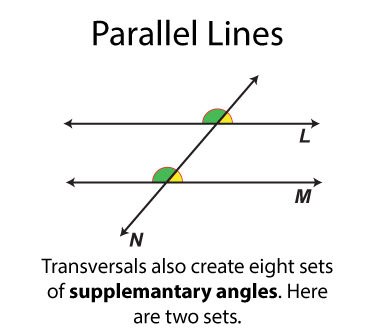
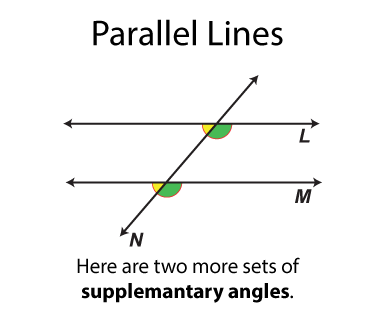
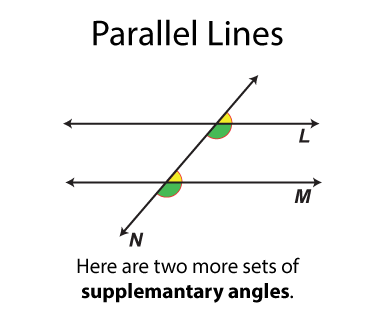
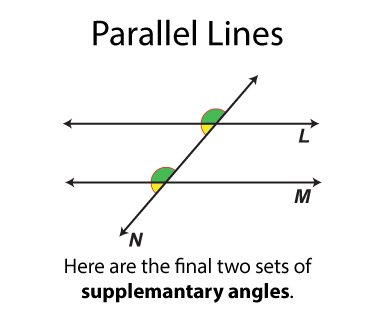
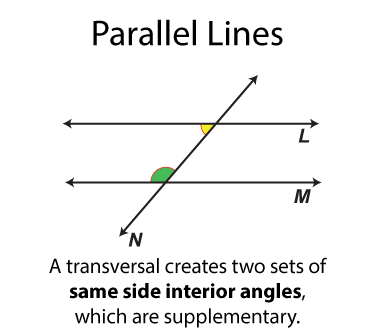
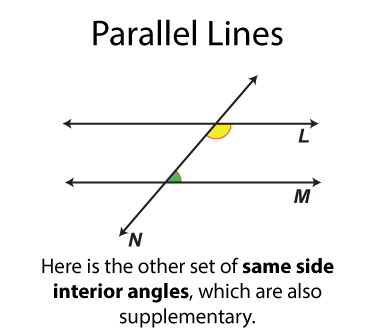
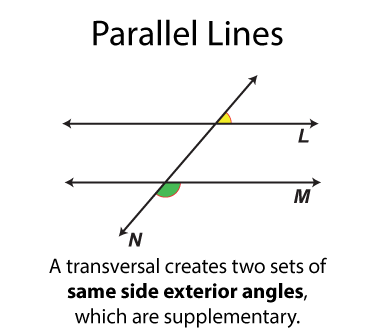
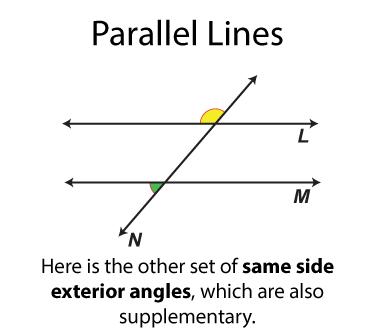
| Common Core Standards | CCSS.MATH.CONTENT.4.G.A.2, CCSS.MATH.CONTENT.8.G.A.5 |
|---|---|
| Grade Range | 4 - 8 |
| Curriculum Nodes |
Geometry • Points and Lines • Parallel Lines |
| Copyright Year | 2014 |
| Keywords | Parallel Lines Cut by a Transversal, parallel lines, transversal, vertical angles, supplementary angles, alternate interior angles, alternate exterior angles |